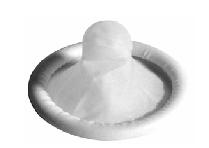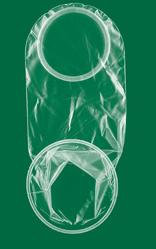
What is the difference between HIV and AIDS?
HIV is the virus that causes AIDS.
H - Human: because this virus can only infect human beings.
I - Immuno-deficiency: because the effect of the virus is to create a deficiency, a failure to work properly, within the body's immune system.
V - Virus: because this organism is a virus, which means one of its characteristics is that it is incapable of reproducing by itself. It reproduces by taking over the machinery of the human cell.
A - Acquired: because it's a condition one must acquire or get infected with; not something transmitted through the genes
I - Immune: because it affects the body's immune system, the part of the body which usually works to fight off germs such as bacteria and viruses
D - Deficiency: because it makes the immune system deficient (makes it not work properly)
S - Syndrome: because someone with AIDS may experience a wide range of different diseases and opportunistic infections
How is HIV transmitted?
The word "acquired" means that AIDS is a disease that can only be transmitted in very specific situations. AIDS is not a disease that people can "catch" like a cold or the flu. HIV is not transmitted through air, water, food, saliva or casual contact (hugging, handshaking, or use of restrooms and drinking fountains).
HIV is found in strong concentrations in blood, semen, vaginal secretions, and breast milk. HIV can only be transmitted if one of these infected fluids enters the blood stream, either through contact with certain membranes of the body, such as the mouth, vagina, urethra, or anus, or through direct contact, such as needle sticks or injection. Two of the most common ways that HIV is transmitted are through unprotected sex and needle sharing.
What is the best way to prevent getting HIV in my sexual relationships?
The best way to prevent getting HIV in a sexual relationship is to have protected sex, that is, sex with the proper use of a condom. A condom is a latex or polyurethane sleeve that fits either over the penis (for male condoms) or in the vagina (for female condoms). The government hands out free condoms to places like mahube, so they are easily accessible. Please stop by the office if you need either type of condom.
When should I use a condom?
You should use a condom every time you engage in anal, vaginal and/or oral sex.
What is the proper way to use a male condom?
 (Male condom-rolled)
(Male condom-rolled)
- A new condom must be used for each sex act.
- Only use one condom at a time. Two condoms are not better than one. Putting two condoms on at the same time could cause the latex to break down and lead to condom failure.
- The condom must be put on a hard/erect penis before any sexual contact occurs.
- Carefully open the package with your fingertips. Do not use sharp items (i.e. your teeth or fingernails) to open the package.
- Hold the tip of the condom and squeeze out the air. Excess air could cause condom breakage.
- Holding the tip of the condom between your fingertips, smooth the condom over the tip of the erect penis.
- Unroll the condom all the way down the shaft of the penis.
- Immediately after ejaculation, withdraw the penis, holding onto the rim of the condom.
- Dispose of properly. Do not flush condoms. Throw them away.
What is the proper way to use a female condom?
 (Female condom)
(Female condom)
- A new condom must be used for each sex act.
- Rub the condom to spread lubricant.
- Hold the smaller ring, and squeeze it to look like a figure eight.
- Insert the “8” as far as it will go into the vagina.
- Using one or two fingers, push (from the inside) the condom up (Note: it should NOT be twisted)
- During sex, guide penis inside condom.
- To remove, squeeze and twist the outer ring, and pull out.
- Discard in wastebin.
How can I tell if I have been infected with HIV? What are the symptoms?
The only way to know if you are infected is to be tested for HIV infection. You cannot rely on symptoms to know whether or not you are infected. Many people who are infected with HIV do not have any symptoms at all for many years.
The following may be warning signs of HIV infection:
- rapid weight loss
- dry cough
- recurring fever or profuse night sweats
- profound and unexplained fatigue
- swollen lymph glands in the armpits, groin, or neck
- diarrhea that lasts for more than a week
- white spots or unusual blemishes on the tongue, in the mouth, or in the throat
- pneumonia
- red, brown, pink, or purplish blotches on or under the skin or inside the mouth, nose, or eyelids
- memory loss, depression, and other neurological disorders
Please note that no one should assume they are infected if they have any of these symptoms. Each of these symptoms can be related to other illnesses. Again, remember, the only way to tell if you have been infected is to be tested for HIV.
How long after a possible exposure should I be tested for HIV?
It can take some time for the immune system to produce enough antibodies for the antibody test to detect and this time period can vary from person to person. This time period is commonly referred to as the “window period”. Most people will develop detectable antibodies within 3 months. Even so, there is a chance that some individuals will take longer to develop detectable antibodies. Therefore, if the initial negative HIV test was conducted within the first 3 months after possible exposure, repeat testing should be considered >3 months after the exposure occurred to account for the possibility of a false-negative result. Ninety seven percent will develop antibodies in the first 3 months following the time of their infection. In very rare cases, it can take up to 6 months to develop antibodies to HIV.